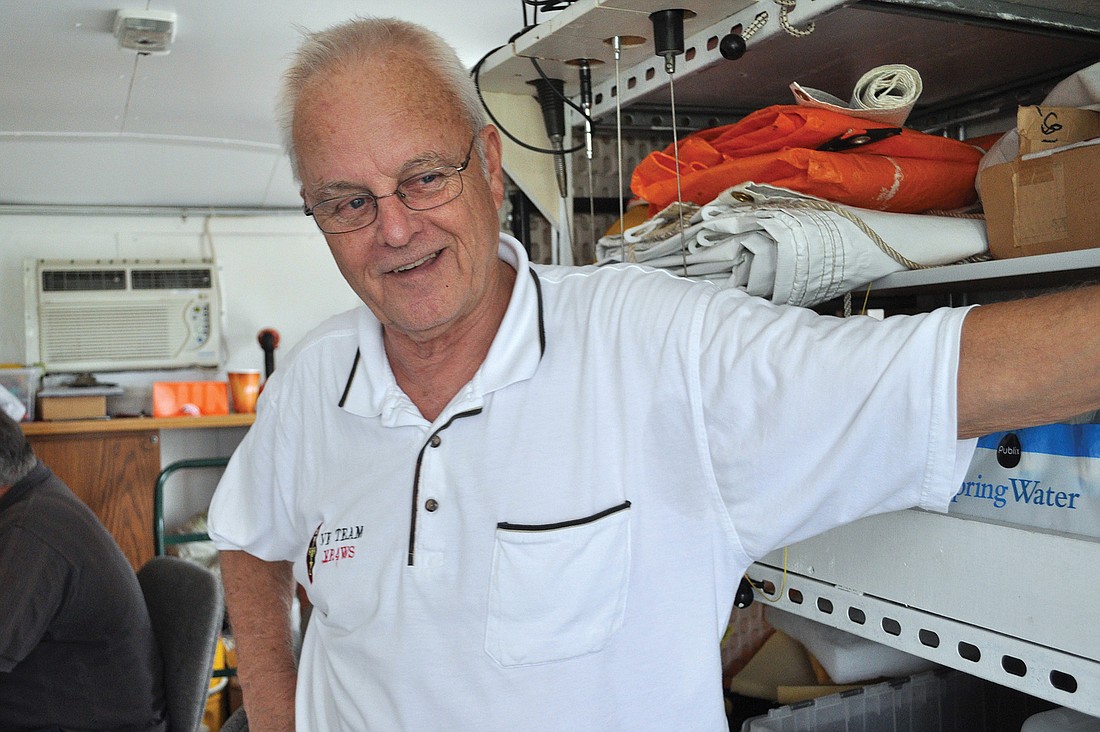- April 27, 2024
-
-
Loading

Loading

EAST COUNTY — Kilo. Four. Golf. Golf. Contest. CQ.
Roger Byron rattled off the words into a microphone, and waited momentarily for a response to his radio call.
A man’s voice crackled through, and Byron scribbled his information down quickly, before making his call, yet again, from a small trailer parked outside the Lakewood Ranch American Red Cross Building.
As rain and winds began hinting of an emerging tropical storm Saturday, June 23, Byron and other local amateur radio enthusiasts took turns honing their radio skills during a field-day exercise, in which they each tried to contact fellow amateur radio operators from each state, while practicing their emergency response capabilities.
“We practice getting on the air and exercising the equipment,” said Ed Skalecki, emergency coordinator for the local Amateur Radio Emergency Service. “It’s good to get everybody familiar with how to do that — get rid of the (microphone) fright.”
“That’s kind of what field day is all about — to help them understand what they are going to do,” he said. “The hobby has hundreds of different assets — Morse code, digital radio, using satellites to bounce signals. During field day, you can do any of these, using different techniques.”
In disaster recovery efforts, ham radio operators often provide a vital link between local governments, emergency agencies and others working together to assist the community when other lines of communication are down.
With a radio, a generator, a trailer and a push-up antenna, ham radio operators are ready to communicate. Using their radios, sometimes in coordination with other technologies, such as laptop computers and video cameras, operators can send emails, text messages, pictures and other information using radio frequencies.
But time of day, atmospheric layers and other factors can affect radio frequencies, making field-day contests a valuable training experience for amateur radio operators who wish to help during times of disaster.
“It’s much better to practice under adverse conditions,” said East County resident Jim Woodson, president of the Manatee Amateur Radio Club.
Some operators participating in field day were new to the concept. Others had participated before or had even used their radios to aid in disaster response efforts.
Bradenton resident Roger Byron had even used a video camera hooked up to his radio to capture pictures of flooding and sent them to Manatee County’s Emergency Operations Center during a past storm.
Byron said field-day exercises are important for helping amateur radios prepare for operating under fast-paced, stressful emergency conditions.
“You end up with a team of folks who can operate in adversity,” Byron said of the field-day exercise. “When all other communication systems go down, radios usually can connect. I’ve talked around the world with Morse code and one watt of energy.”
For information about operating ham radios or field-day exercises, visit the National Association for Amateur Radio’s website, arrl.org.
For information on the Manatee Amateur Radio Club or the Amateur Radio Emergency Service, visit manatee-arc.org.
Contact Pam Eubanks at [email protected].